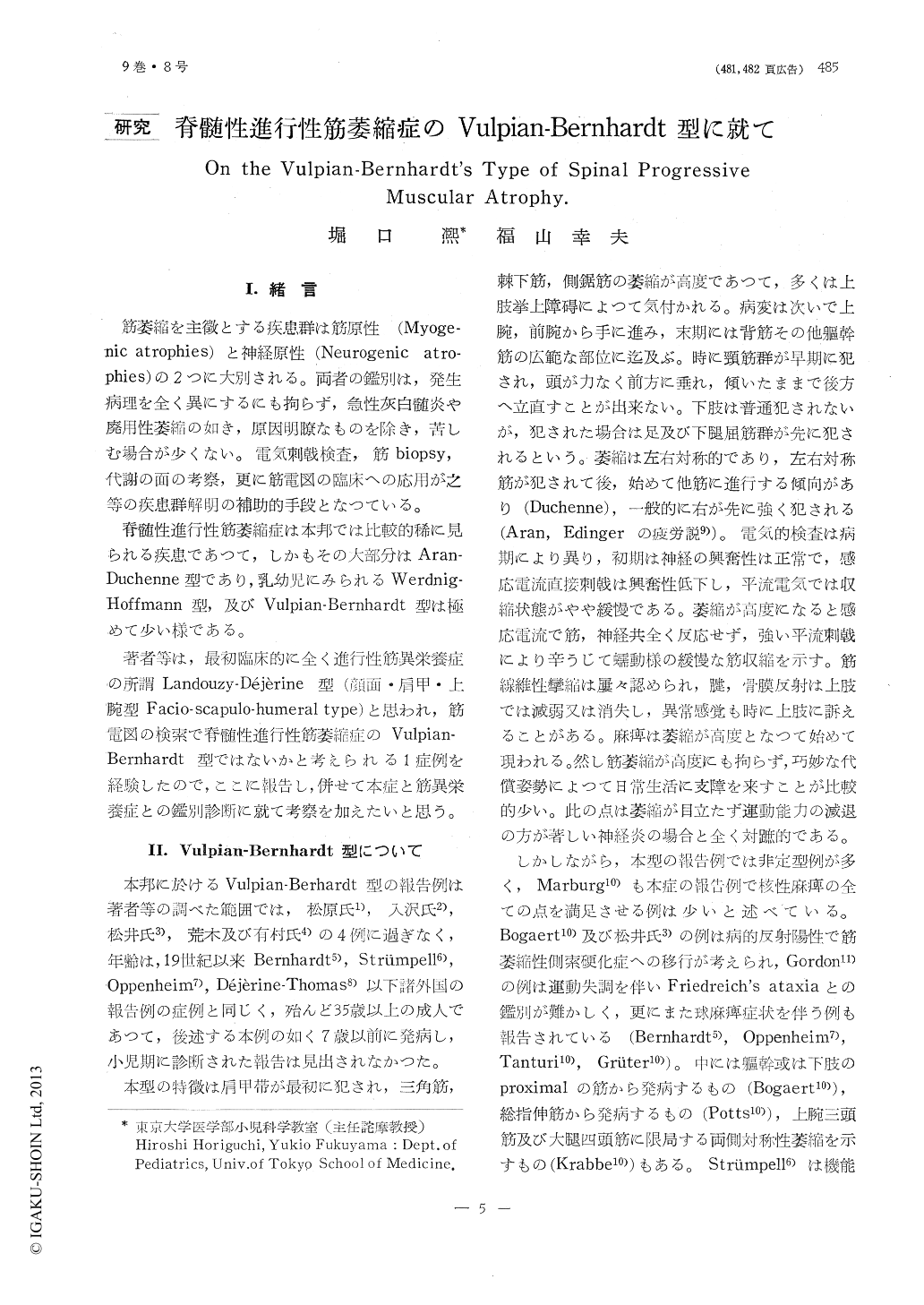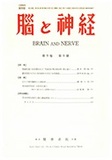Japanese
English
- 有料閲覧
- Abstract 文献概要
- 1ページ目 Look Inside
I.緒言
筋萎縮を主徴とする疾患群は筋原性(Myoge-nic atrophies)と神経原性(Neurogenic atro-phies)の2つに大別される。両者の鑑別は,発生病理を全く異にするにも拘らず,急性灰白髄炎や廃用性萎縮の如き,原因明瞭なものを除き,苦しむ場合が少くない。電気刺戟検査,筋biopsy,代謝の面の考察,更に筋電図の臨床への応用が之等の疾患群解明の補助的手段となつている。
脊髄性進行性筋萎縮症は本邦では比較的稀に見られる疾患であつて,しかもその大部分はAran-Duchenne型であり,乳幼児にみられるWerdnig-Hoffmann型,及びVulpian-Bernhardt型は極めて少い様である。
The author reported here a case of 11 years old boy who manifested slowly progressive symmetrical muscular atrophies over the face, shoulder, back and upper arms, and who complained his ristricted motor ability with-out any sensory disturbances. Many clinical pictures such as early onset of disease, the so-called myopathic facies with pseudo-hypertrophic buccal muscles, absence of muscular fibrillation or fasciculation, and particularly the characteristic distribution and mode of progression of muscular wastings strongly suggested that this morbid process were myogenic and this patient were con-cerned with the facioscapulohumeral type of myopathy (Landouzy-Déjèrine's type).
But this suggestion was incorrect, because careful electromyographic examination de-tected from atrophic muscles many synchro-nization voltages of high amplitude (3~4 mV) which, according to our present knowledge, are supposed to result from some lesion of the motor nerve cells in the anterior horn of spinal cord.
It became evident thus that this patient suffered from the Vulpian-Bernhardt's type of spinal progressive muscluar atrophy, which belongs to a extremely rare entity especially in childhood.

Copyright © 1957, Igaku-Shoin Ltd. All rights reserved.


